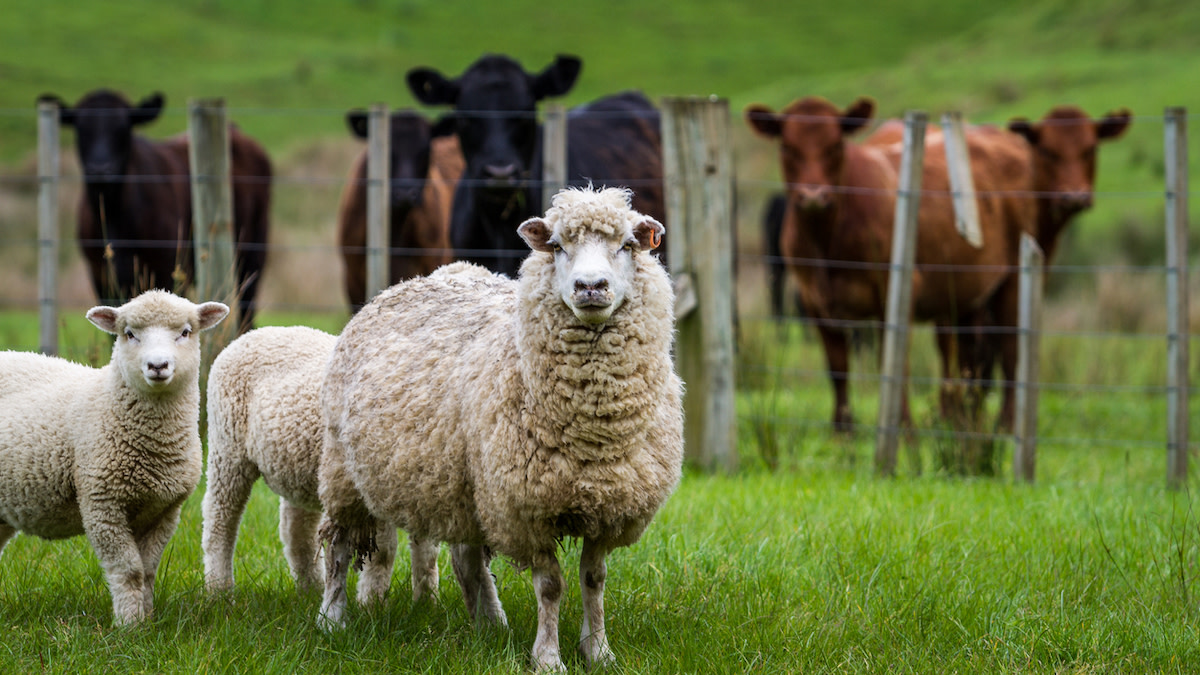
To understand how not to overgraze your homestead, you must first understand what rotational grazing is. Managing your pasture is an art and rotating your animals on pasture consistently and effectively makes a huge difference in the health of your livestock and the health of your land.
Rotational grazing builds topsoil, spreads manure, ensures all plant types are being grazed, aids in remineralization of the soil, sequesters carbon, and gives your animals consistently fresh forage.
Overgrazing, on the other hand, means that the land has been grazed for too long and the animals haven’t been moved off it, thus hindering the future growth of the pasture. If there isn’t future growth on the pasture, then there won’t be anything left to rotate your animals through again. This is imperative to rotational grazing so that your critters will always have something to eat.
There are many techniques for engaging your land in rotational grazing, and each way uses a different method to rotate your animals to fresh pasture consistently. Here are three critical concepts to keep in mind so that you don’t overgraze your plot.
Stocking Rates A stocking rate is essentially the animal-to-land ratio—how many units of land ‘X’ units of livestock need to thrive. The right amount of land and the right number of animals go hand in hand, and it will make a big difference when planning your pasture and managing your homestead responsibly.
A lot of math goes into calculating your stocking rate professionally, so we'll keep it easy. From my experience in Alberta, here are some effective stocking rates per acre: one cow, four hundred chickens, five sheep, five goats, or three pigs. Obviously these numbers will be different if you're in Wyoming or Texas or somewhere else.
These rates are from our farming experience and can greatly change due to the way the pasture is being managed. We move our animals every 4 to 7 days and allow a 30-day rest period before putting our them back in the same spot.
It's best to start with fewer animals on a plot of land than you think to see how it goes. After all, your goal is to build topsoil and not deplete it, which can happen with too high of a stocking rate. There may also be factors that you won't be able to control (like drought) that may impact the regrowth time and result in a pasture of poor quality.
The Three-Inch Rule The usual method might seem to be keeping your animals in the same spot and moving them when the grass gets too low, but truthfully you need to move them before this point.
The magical height is three inches. Once your stock has grazed the browse down to that point, they need to be moved. Three inches of forage left suggests that the animals have eaten down just enough to prevent the pasture from being overgrazed, allowing it to regrow healthily.
Letting your livestock graze to under one inch can affect the health and regrow rate of your homestead. This also causes the animals to become more susceptible to the parasites that sit at the base of the grass.
The Right Rest Time Allowing your pasture to rest in between animal rotation will allow the land to recover. If your pasture contains fewer legumes and forbs and more grasses, then allowing it to rest between rotations isn't as important. But if your pasture has a lot of legumes and forbs, an average rest time of 28 to 42 days is the best practice.
Rotational grazing is one of the best things you can do for your animals. This recurrent movement mimics the way animals feed in their natural habitat, by constantly moving around to fresh areas.






Conversation